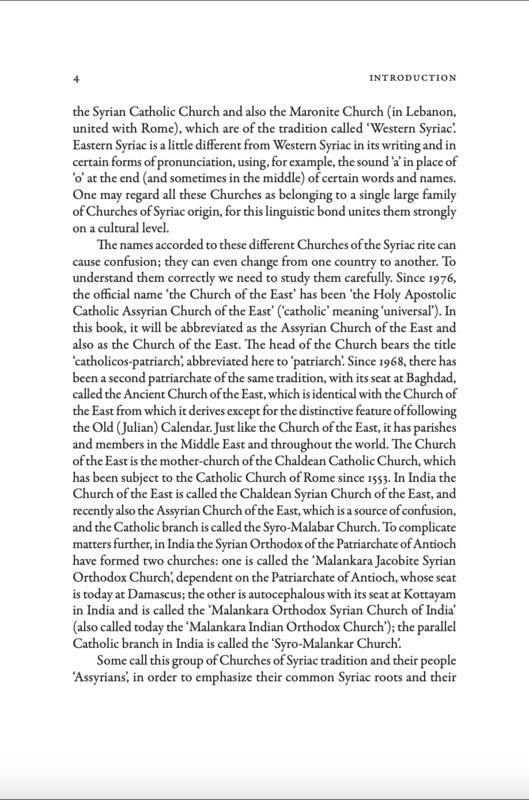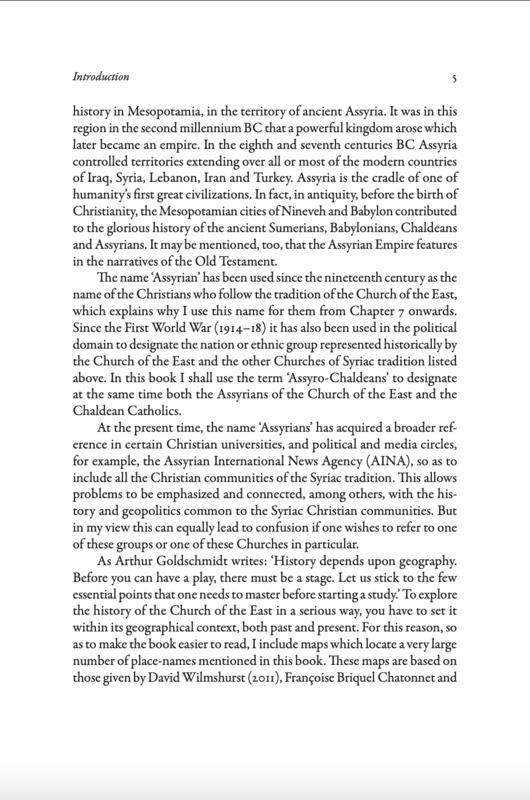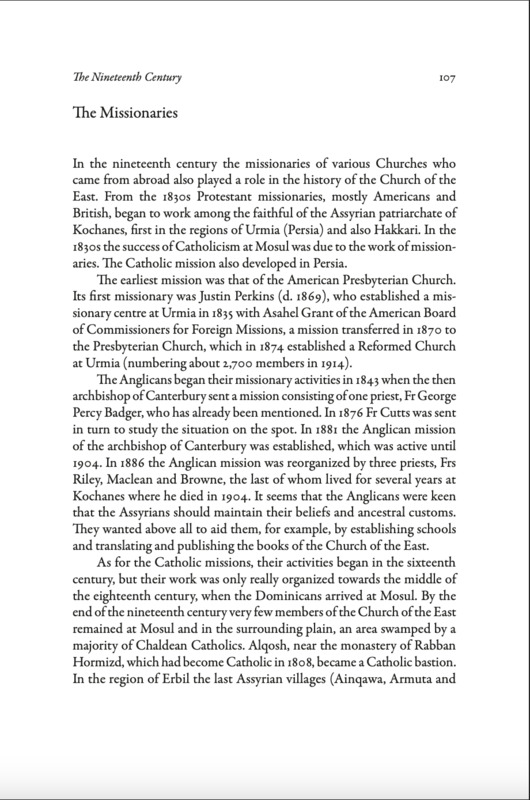-
Title
-
The Assyrian Church of the East: History and Geography
-
Creator
-
Christine Chaillot
-
Date
-
2021
-
Description
-
According to Christine Chaillot, the communities in question are the Eastern Syriac churches: the Assyrian Church of the East (officially “Holy Apostolic Catholic Assyrian Church of the East” since 1976), its parallel jurisdiction the Ancient Church of the East (since 1968, same tradition, Old/Julian calendar), and their Catholic counterpart, the Chaldean Catholic Church (historically linked to the Church of the East). She also shows how names vary by place, especially in India (Chaldean Syrian Church of the East / Assyrian Church of the East; Syro-Malabar; Malankara branches)—which is why the same people can appear under different labels. In her wording, “Assyrian” is the name applied to followers of the Church of the East from the nineteenth century and, after World War I, it also carries a political-ethnic sense.
Chaillot highlights the role of missionaries in that modern consolidation: American and British workers operated among the faithful of the patriarchate of Kochanes (Urmia, Hakkari); the Archbishop of Canterbury founded an Anglican mission in 1881, reorganized in 1886 (Riley, Maclean, Browne). Their stated aim was to assist while preserving beliefs and ancestral customs, notably through schools and by translating and publishing the Church of the East’s books. Taken together, her pages indicate that the use and public prominence of “Assyrian” as a church-linked and later political-ethnic identity are modern (19th–20th century) developments. She does not claim that there was no earlier sense of peoplehood; rather, she shows that the label “Assyrian” and its broader, revived scope are recent and were amplified by missionary activity and twentieth-century usage.
-
Language
-
English
-
Publisher
-
The Assyrian Church of the East: History and Geography, Christine Chaillot, 2021, pp. 4–5, 107.
-
books.google.com
-
Subject
-
History






